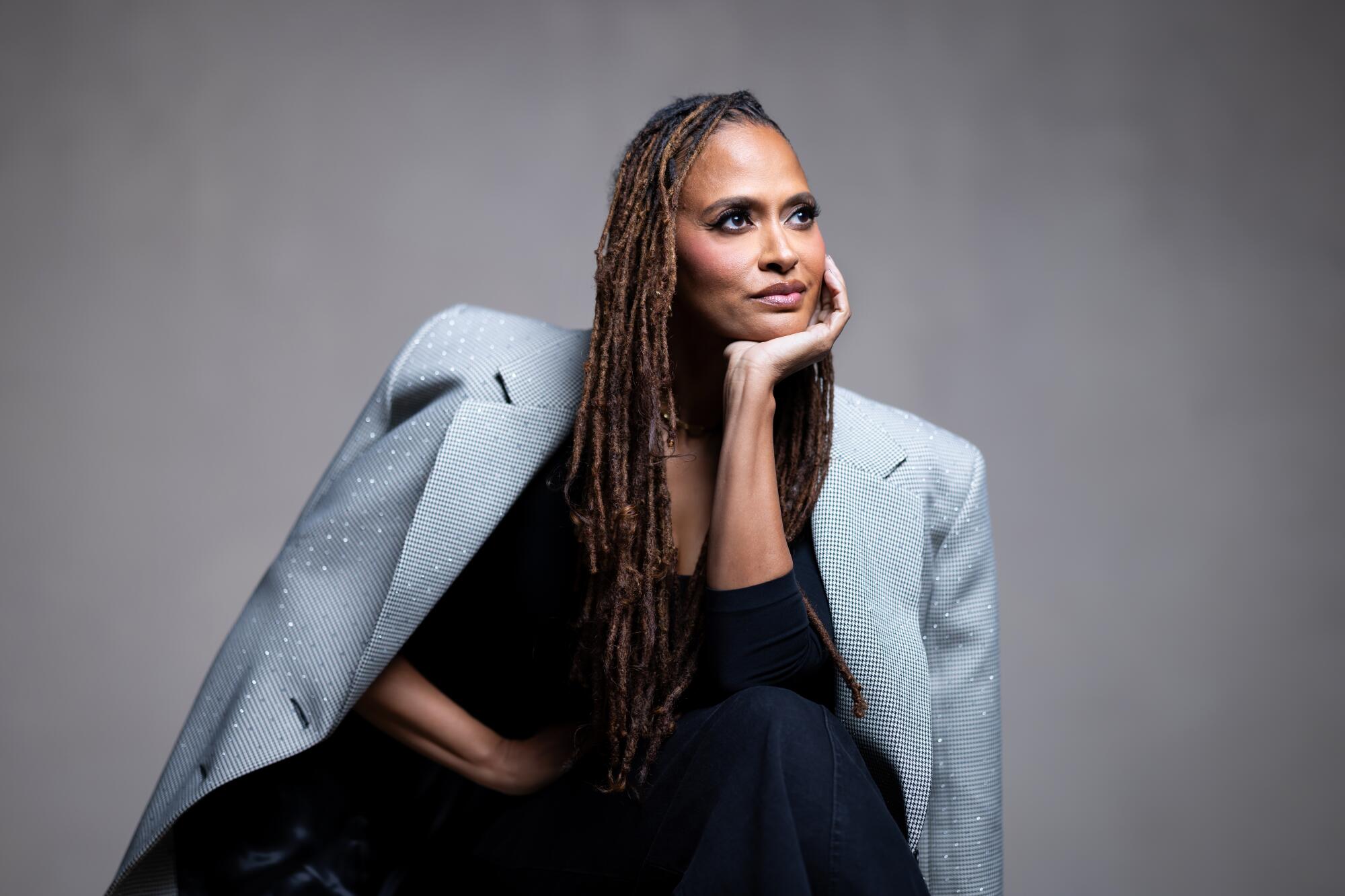
- Share via
A typical afternoon at Ava DuVernay’s sprawling, 14,000-square-foot creative headquarters in Historic Filipinotown is a buzzing, bustling sight: Staff from the Oscar-nominated filmmaker’s arts and social impact collective Array meet in bright and welcoming alcoves over production, distribution, education and public programming projects; visitors head across a sun-drenched courtyard to the buildings that host writers rooms, preproduction, editing suites and Array’s 501(c)(3) nonprofit initiatives; and DuVernay herself flits in and out of the 50-seat state-of-the-art Amanda Cinema with her postproduction team, fine-tuning her drama “Origin,” arguably the most ambitious film of her already ambitious career.
Discover the changemakers who are shaping every cultural corner of Los Angeles. L.A. Influential brings you the moguls, politicians, artists and others telling the story of a city constantly in flux.
Most directors focus on getting their next movie made. DuVernay, 51, is building something bigger — an institution, a community, a future for underrepresented voices — as she climbs the ranks of Hollywood’s A-list auteurs.
Born in Long Beach and raised in Lynwood, the award-winning writer, director, producer (“Selma,” “13th,” “When They See Us”) and Oprah bestie has proven an industry rebel simply by leading by example. In 2016, her mandate to hire all female directors on her series “Queen Sugar” served as a model in making radical change while leaving no room for excuses. By 2018, she became the first woman of color to direct a $100-million live-action film with “A Wrinkle in Time.” Array Crew, created to connect underrepresented below-the-line talent with jobs in entertainment, is now the largest hiring database in Hollywood.

Under DuVernay’s leadership, Array’s collective efforts have included free screenings and film literacy guides for the public, eco-green practices and the launch of LEAP (the Law Enforcement Accountability Project), which called attention to police brutality after the 2020 murder of George Floyd. All are rooted in a desire to build community and create change.
“It started with a need to create a space where I can be safe, and for me, safety comes with community,” DuVernay said of the vision that unifies her work, from the stories of underrepresented voices she shepherds on screen to the conversations they inspire.
“The movement outlives the movie — and that’s how your art outlasts you,” said Tammy Garnes, Array’s education division vice president, described by DuVernay as one of the company’s “pillars” along with Mercedes Cooper, senior vice president of public programming, and President Tilane Jones.
“When we look at legacy organizations that stay around beyond their founder’s lifetime, that’s my goal,” DuVernay said. “If I’m not here tomorrow, I would hope that Array, or the principles of Array, or something that Array did or started or meant would last.”


